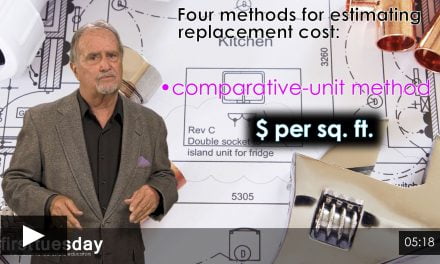Have you seen greater homebuyer interest in ARMs since FRM rates have increased over the past year?
- Yes, I’ve noticed more interest in ARMs. (46%, 11 Votes)
- No, I’ve seen the same interest in ARMs. (33%, 8 Votes)
- No, I’ve noticed less interest in ARMs. (21%, 5 Votes)
Total Voters: 24
ARMs can be a dangerous choice for homebuyers with little investment experience. But rising FRM rates and the prospect of future rate movement make ARMs an attractive option in 2019.
ARM savings in 2019
Adjustable rate mortgages (ARMs) are alluring to homebuyers seeking to extend their purchasing power, or just save money on their monthly mortgage payments. But cautious homebuyers are taught to never consider this risky mortgage product and stick with the stability of fixed rate mortgages (FRMs), even when they are considerably more expensive. We are taught that ARMs are best left to more seasoned investors.
However, are there any scenarios when choosing an ARM makes financial sense for an owner-occupant? Here, we consider when it makes sense for a homebuyer to choose an ARM in 2019.
The monthly savings an ARM produces
The interest rate on a new 5/1 ARM averaged 3.95% in the week ending January 18, 2019. Compare this to the alternative rates of:
- 3.70% for a 15-year fixed rate mortgage (FRM); and
- 4.37% for a 30-year FRM.
Related article:
For the homebuyer who wants to extend their purchasing power as much as possible — often a necessity for homebuyers in California’s competitive price environment — a 15-year FRM is out. This leaves today’s homebuyer with the option of taking out an ARM at a lower initial rate (more purchasing power), or a more stable 30-year FRM with a slightly higher rate (less purchasing power).
Just how much does the difference in rate amount to? For example, consider a home purchased for $500,000 with a 20% down payment. The monthly payment of principal + interest will be:
- $1,995 under the current 30-year FRM rate; or
- $1,898 under the current 5/1 ARM rate.
In this scenario, the homebuyer saves $97 a month by choosing the 5/1 ARM (until it adjusts, but more on that later).
Alternatively, the buyer may want to take advantage of the monthly savings and purchase a more expensive home. If they want to make the same monthly payment as they would under a 30-year FRM, this increases their purchasing power from $500,000 to $520,500.
But there is a big caveat to these savings — they are only temporary. What happens when the rate adjusts?
The ARM rate adjusts
The ARM rate homebuyers use to compare against FRM rates are just where the rate starts, called the introductory interest rate, or the teaser rate. During this introductory period — which can be anywhere from ten months to ten years, depending on the term the homebuyer chooses — the homebuyer pays the teaser rate.
Thus, while the lower rate saves homebuyers money during the short term, once the teaser rate resets and adjusts, their payment will likewise shift. How much it will shift is somewhat unpredictable.
The amount of rate adjustment is based on the index to which the ARM is tied, chosen by the lender upon origination. As the index figure rises or fall, so does the ARM interest rate. Some common indices lenders use to adjust their ARM rates include the:
- 11th District Cost of Funds Index (COFI);
- 12-month Treasury Average; and
- London Interbank Offered Rate (LIBOR), though this will be replaced in 2021 by the Secured Overnight Financing Rate (SOFR).
To arrive at the new interest rate, the lender takes the index rate plus an agreed-to margin. For example, if the index rate is 3% and the margin is 2%, the note rate the homebuyer pays is 5%.
Editor’s note — Some ARMs have other features which impact how the interest rate or payments adjust. These features include:
- an initial interest rate cap;
- periodic interest rate caps;
- a lifetime interest rate cap and floor;
- periodic payment caps;
- conversion features; and
- prepayment penalties.
first tuesday students, read more in Realtipedia Volume: Finance, Chapter 6: Adjustable rate mortgages, accessible via your Student Homepage.
ARMs are riskier than FRMs because the rate reset often results in substantially higher payments, and payment shock. This was experienced on a wide scale following the Millennium Boom when payments rose beyond homebuyers’ ability to pay. Lenders and agents alike counseled their homebuyer clients to consider ARMs to keep up with the rapidly rising price environment of the mid-2000s. Their motto was: “You can always refinance before the rate adjusts!”
The result: at the peak of ARM-use in 2004-2005, three-out-of-four mortgage originations in California were ARMs.
But no one involved foresaw the housing crash just ahead, which left so many homeowners underwater, with reduced incomes and unable to refinance. Then, when their ARM rates reset, homeowners already strapped for cash during the recession were unable to keep up with their increased mortgage payments. The result? California’s foreclosure crisis.

Who the ARM will pay off for in 2019
With the disasters of California’s housing and foreclosure crisis still in recent memory, most homebuyers have been advised to stay far away from ARMs. After all, no one knows how much payments will increase when the adjustment period arrives. Today’s more cautious homebuyers shy away from these uncertainties, unwilling to repeat the mistakes of their parents’ generation.
This begs the question — are ARMs ever beneficial to homebuyers?
ARMs often work well for seasoned, short-term investors who plan to sell within the initial lower-rate period. On the other hand, owner-occupant homebuyers are usually advised to stick with FRMs and avoid the risks inherent in ARMs.
But 2019 might be an exception to this rule — let us explain.
First of all, Congress has removed some of the features of ARMs that made them so catastrophic to the housing industry. New underwriting standards (the ability to repay rules) require ARMs to be underwritten at the maximum allowable interest rate — the fully indexed rate — after five years from the date of the first payment. [12 Code of Federal Regulations §1026.43(c)(2)]
These rules attempt to mitigate the risk of payment shock, which will work if the homebuyer takes out the ARM with the reset rate in mind rather than the more appealing teaser rate.
Another reason why the ARM is more attractive in 2019 than in previous years is that rates have increased during 2018 in the lead-up to the next recession. This matters because once the recession appears imminent, the Federal Reserve (the Fed) will inevitably pull back on rates, causing interest rates of all types — including index rates — to fall.
The Fed won’t act to increase interest rates again until the economy is well into its next recovery and expansion — something that isn’t likely to occur until 2022-2023, at the soonest.
Therefore, homebuyers who choose shorter introductory periods (which usually correspond with lower teaser rates compared to those with longer introductory periods), can expect their first reset rate to be relatively low. Further, if they use the intervening months or years while they have the low teaser rate to invest the savings elsewhere, they may come out in a much better position.
Homebuyers with a longer term (say, five years) may choose to go with an ARM with the intention of refinancing or selling the home before the rate resets. This intention is slightly riskier, since they can never be sure what their — or their home’s — financial position will be in five years when it’s time to refinance or move. Still, homebuyers who are relatively certain of their plans to move may find the ARM a great deal for their situation.
Real estate professionals: have you seen greater homebuyer interest in ARMs as FRM rates have increased over the past year or so? Share your experiences in the comments!














